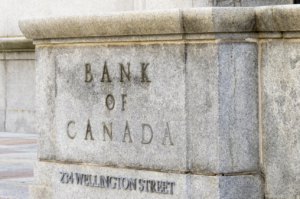Variable rate mortgages getting all the love…
As of June 2022, we are currently seeing unnatural discrepancies in the size of mortgage loans borrowers will qualify for, and it’s all because of a rift in the space-time stress test continuum.
You see, most 5-year fixed mortgage rates are already over 5%, making their stress test a full 2% higher at 7% or more. Concurrently, the mortgage stress test rate for variable mortgages is still a comparatively low 5.25% or so.
In order to maximize the amount homebuyers can qualify for, many borrowers are choosing a variable-rate mortgage, even if their actual personal preference is for a fixed-rate mortgage.
Last week, in response to one of the big banks increasing its uninsured 5-year fixed rate to 5.23%, rate expert Rob McLister tweeted, “Borrowers must prove they can afford a stress tested payment @ 7.23%—almost 200 bps higher than stress test payments on variable rates. Completely senseless.”
It’s somewhat of a paradox that needs to be sorted out sooner rather than later. Because it’s not like all the variable-rate borrowers are feeling peachy and comfortable. There is far less conviction among the cognoscenti who often preach, “variable all the time; it has never been wrong, and it never will be wrong.”
Variable-rate borrowers are paying attention to the ever-increasing Bank of Canada overnight rate, which in turn is triggering increases to the prime rate. This means variability in the amount of interest those borrowers must pay each month, and, unless their payment is static, their variable-rate mortgage payment is increasing too.
At least the fixed-rate borrowers know their worse-case scenario. They commit to a specific payment for the term of their mortgage.
Options for today’s borrowers
Consumers looking for ways to maximize their mortgage are turning to mortgage brokers who have figured out the best approach to maximize their borrowing power. There are several ways to get ahead of the mortgage stress test:
1) Choose a variable rate mortgage, which currently entails a stress test rate of 5.25%. However, when the Bank of Canada meets on July 13, we can expect a hefty rise in the prime rate to follow. The variable mortgage stress test rate might be 6% by mid-July.)
2) Select a shorter fixed-term mortgage. Currently, 2- and 3-year fixed rates are below 5%, so there is a modest advantage relative to the 5-year fixed rate.
3) A private mortgage lender might be what the doctor ordered, provided your property and location fit their profile. If all other avenues fail, at least you can put financing in place (albeit at a higher cost than you may have planned for).
4) Finally, certain credit unions can be another option. They are provincially regulated, and in some cases offer mortgage products that qualify the borrower at the actual contract rate, or the contract rate plus 1%. And higher debt-service ratios might also be possible. Such institutions have enjoyed an increase in popularity in recent months.
Who is affected by the mortgage stress test rate?
If you’re buying a home, the mortgage rules have a direct impact on how much home you can afford. Most of the time, you have to prove you can still make your monthly mortgage payments if interest rates were to rise by 2% in the future.
And if you already have a mortgage, you’ll face a mortgage stress test if you refinance your home, take out a homeowner line of credit, or switch to a new lender (but not if you renew with the same lender).
How much mortgage can you afford with a household income of $120,000?
Suppose your household income is $120,000, you have good credit and you want to buy a condo in a major urban centre. Let’s say the property taxes are $2,400 and the condo maintenance/strata fees are $360 each month.
Conventional purchase with a down payment of 20% or more
| Mortgage type | Lender type | Mortgage rate |
Stress test rate | Down payment | Amz. | Mortgage amount possible |
| Variable | Bank | 3.35% | 5.35% | 20% or more | 30 years | $630,000 |
| Fixed | Bank | 5.34% | 7.34% | 20% or more | 30 years | $515,000 |
| Fixed | Credit union | 5.49% | 5.49% | 20% or more | 30 years | $720,000 |
The table demonstrates our point very well. An uninsured purchaser with at least 20% down might qualify for as little as $515,000 (fixed rate) or as much as $630,000 (variable rate). This is for identical borrowers and identical mortgage details. The only difference is the type of mortgage chosen with their bank or any A-lender.
And, with this specific credit union example, for a small rate premium, the borrower also enjoys expanded debt-service ratios. This results in a whopping $720,000 of mortgage potential. Again, same borrowers, same everything.
This all seems out of whack.
High-ratio purchase with a down payment of 10% or more
Now, let’s take this same borrower in all respects, except they have a down payment of less than 20%, and so the maximum amortization period is 25 years.
| Mortgage type | Lender type | Mortgage rate |
Stress test rate | Down payment | Amz. | Mortgage amount possible |
| Variable | Bank/C.U. | 2.70% | 5.25% | 10% | 25 years | $570,000 |
| Fixed | Bank | 5.14% | 7.14% | 10% | 25 years | $480,000 |
| Fixed | Credit union | 4.69% | 6.69% | 10% | 25 years | $500,000 |
There is still significant variability in the results. The 5-year fixed-rate mortgage from the bank will only get you $480,000, whereas the variable-rate choice will increase borrowing power by $90,000.
Looking at the two tables together tells us your borrowing power might be as low as $480,000 and as high as $720,000 depending on the type of mortgage you choose, the lender you work with, and of course the size of your down payment.
The takeaway
These days, you qualify for a larger mortgage with a variable-rate product or with a shorter fixed-rate term.
Additionally, you may qualify for a larger mortgage if your lender is a credit union or a private lender.
Some lenders will also offer expanded debt-service ratios (and thus greater borrowing power). This might be on an exception basis, or it might simply be how their offerings are structured, though not for high-ratio borrowers.
Clearly, mortgages in 2022 are much more complex than at any time in the past. It was not that long ago the question most asked was, “what’s your lowest rate?”
These days, there are other priorities.
More than ever, you need to be working with mortgage professionals with access to a wide array of lenders, and who possess a deep understanding of how to maximize your borrowing power. And of course, when it comes down to the short strokes, you still want the best possible rate for your circumstances.
Published by Ross Taylor









